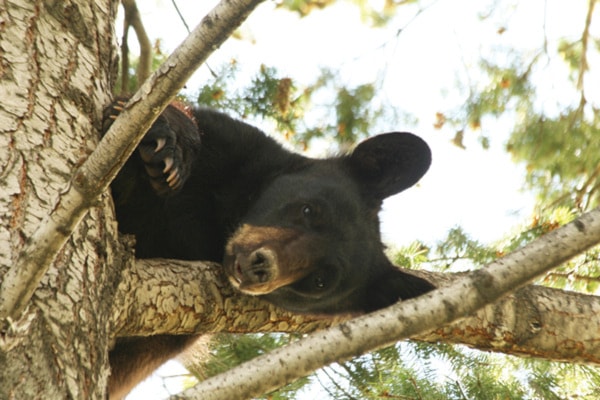Within the month, those enjoying the outdoors should be able to get up-to-the-minute info online about the wild animals they may encounter.
“We hope to grow that so one day you will, for example, be riding your bike down a trail and your phone will be able to buzz and let you know there was an animal sighting within that area in the last week and here is the information that you can use to minimize the chance you have a conflict with the animal,” said Frank Ritcey, provincial co-ordinator for WildSafeBC.
A new mapping program, running under the title of WildSafeBC, is striving to reduce human-wildlife conflict through education, innovation and co-operation through a public website where animal encounters in urban settings can be tracked. The program is an expansion of the highly successful Bear Aware program.
“What we are about is reducing human wildlife conflict. The website, still in its initial stages, is very much about live, work, play and grow,” said Ritcey. “So how you live in your residence and reduce attractants, work is for the people working in the areas where wildlife is found, the play component is very special to a lot of British Columbians who are outdoors, and the grow is about how to grow food responsibility and minimize human wildlife conflict.”
Incidents of wildlife reported to the Conservation Officer Service can now be found online under the Wildlife Alert Reporting Program on the website www.wildsafebc.com/WARP.
With a few clicks, users can zoom in to any area of interest in the province and colour-coded icons of what animals that have been reported will show up, along with the nature of the conflict, the outcome and notes on how to manage the conflict to ensure your safety and whether it is garbage attractants or other issues.
B.C. is the only province using the technology. Ritcey said that is because B.C. is the only one using a provincewide call centre, but he has seen interest from other groups internationally who want to use it.
“It is a very powerful program and there are lots of other jurisdictions looking to follow B.C. You can see historically if an area is a hotspot for certain animals or attractants. The information has a big caveat though: it is only as good as what goes in there. That is why we say it has been reported,” said Ritcey.
“We have other features that we are working on that we will roll out as we go.”
Ritcey said they hope to give groups such as local mountain biking organizations, or those working on restoring trails access to register and update online what they are seeing at interface areas.
Currently the program is updated every week, but Zoe Kirk, WildSafeBC co-ordinator for the Regional District of Okanagan Similkameen, said that up-to-the-minute info should be available within the month.
“For us it is a very efficient tool. For example, the Heritage Hills Homeowners Association or the principal of West Bench, it allows them to post an alert or signs that there is a bear in the area, and we don’t have to go out to all these places,” said Kirk.
“If I get a call from Princeton, I am over two hours away, but now they can get it themselves and start the alerts within their neighbourhoods.”
The website is also capable of switching to 70 different languages.
“This has actually been a great learning tool for the South Okanagan Immigrant Society. We have a diverse population in the South Okanagan and many of the people new to this area often find jobs in agriculture and in those wildlife interface areas,” said Kirk. “Also, we have a wide mix of tourists coming here and using our trails and outdoor areas.”
The provincial call centre handles about 25,000 calls a year and of those 20-22,000 are bear-related calls. While that is still the focus on the website, in certain communities other animals such as cougars or deer are more of a concern.
The WildSafeBC co-ordinators are encouraging people to go to the website and look at what wildlife is coming to your neighbourhood, why it is coming there and if you have questions to contact your local co-ordinator. With the rollout of the website are Facebook pages (www.facebook.com/pages/Wildsafebc-RDOS) and eventually WildSafeBC would like to develop an application for up-to-the-minute cellphone updates.
